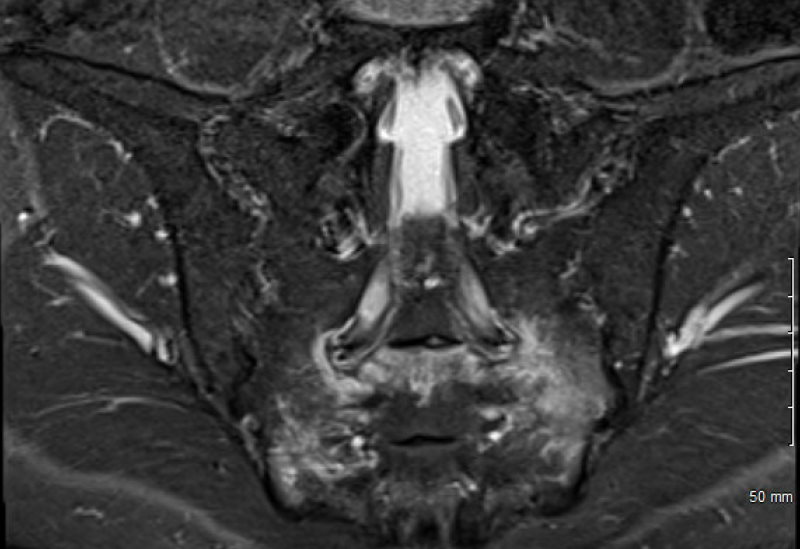A sacral stress fracture commonly causes lower back or buttock pain in runners. This condition is often confused with sacroiliac joint or lumbar spine pain. How do we diagnose a sacral stress fracture and manage it?
What is a sacral stress fracture?
The sacral bone is located at the bottom of the spine and connects the spine to the pelvis through the sacroiliac joints. Abnormal forces on the sacrum caused by increased volume or intensity lead to bone fatigue and stress, which can affect the body or wings (ala) of the sacrum.
Sacral stress fracture symptoms
Common symptoms include low back or buttock pain. Generally, pain is worse during or after impact activity, such as a running session. As the pain gets worse, symptoms are felt with gentle walking. Rest and night pain mean more severe bone stress. Occasionally, pain radiates to the lower leg, mimicking sciatica.
In addition to pain symptoms, it is also essential to ask about sudden changes in the training schedule, improper footwear and alterations in the training surface.
When examining a person with a suspected sacral stress fracture, asking the person to hop is essential. Pain with hopping increases the likelihood of a stress fracture, while pain-free hopping makes bone stress unlikely. Generally, we find tenderness at the sacrum. Examination of other structures, such as the sacroiliac joint, lumbar spine and hip joint, is often normal.
How is a sacral stress fracture diagnosed?

We use MRI to rule in or rule out a sacral stress fracture. Generally, we see bone swelling surrounding a fracture line. Often, X-rays or ultrasounds cannot diagnose stress fractures in the sacrum.
Sacral stress fracture treatment
Treatment of a stress fracture of the sacrum consists of rest from running and prolonged walking. Sometimes, if the pain is severe, you may need to use crutches for a few weeks.
Generally, rest from running will be at least six weeks, although the exact rest time will depend on the severity of symptoms at the diagnosis. People can maintain aerobic conditioning with non-impact activities such as swimming, cycling and upper body weights. We also suggest focused hip and pelvic strengthening exercises. It would be best to avoid NSAIDs such as ibuprofen, as recent evidence suggests that NSAIDs may delay bone healing.
As you start running, we suggest progressing slowly using a walk/run programme. Alternatively, you can use an anti-gravity treadmill.
In some cases, tests to assess bone health are recommended. Generally, we suggest a DEXA scan to determine bone density and blood tests to exclude diseases associated with abnormal calcium metabolism or vitamin D deficiency.
Other related questions:
Can you walk with a sacral fracture?
Yes, in milder sacral stress fractures, walking may not cause pain. However, you should avoid prolonged walking or walking for fitness while your fracture is healing.
Can a fractured sacrum heal on its own?
Yes. Most sacral stress fractures will settle with relative rest from impact activity such as running.
Do you need further tests once diagnosed with a sacral stress fracture?
In some cases, we recommend further tests to determine underlying bone health.
In cases with suspected sub-optimal bone health, we consider the following
- Blood tests to assess bone health, including Vit D, B12, folate, ferritin, bone profile and inflammatory markers
- DEXA scan, which measures bone density
Is shockwave a possible treatment for a sacral stress fracture?
Yes. Recent evidence suggests that a type of shockwave called focused shockwave may help with bony healing in stress fractures. Generally, we recommend 3-5 sessions of high-energy-focused shockwave therapy in addition to other treatments. Sometimes, additional shockwave therapy is performed when returning to running or sport.
Final word from Sportdoctorlondon about a sacral stress fracture
Bone stress of the sacrum is a common cause of low back or buttock pain in runners. It is often confused with sacroiliac joint or lumbar spine pain. If you think you could have bone stress in your sacrum, ensure you see an experienced Sports Medicine consultant for a speedy diagnosis.



Leave A Comment